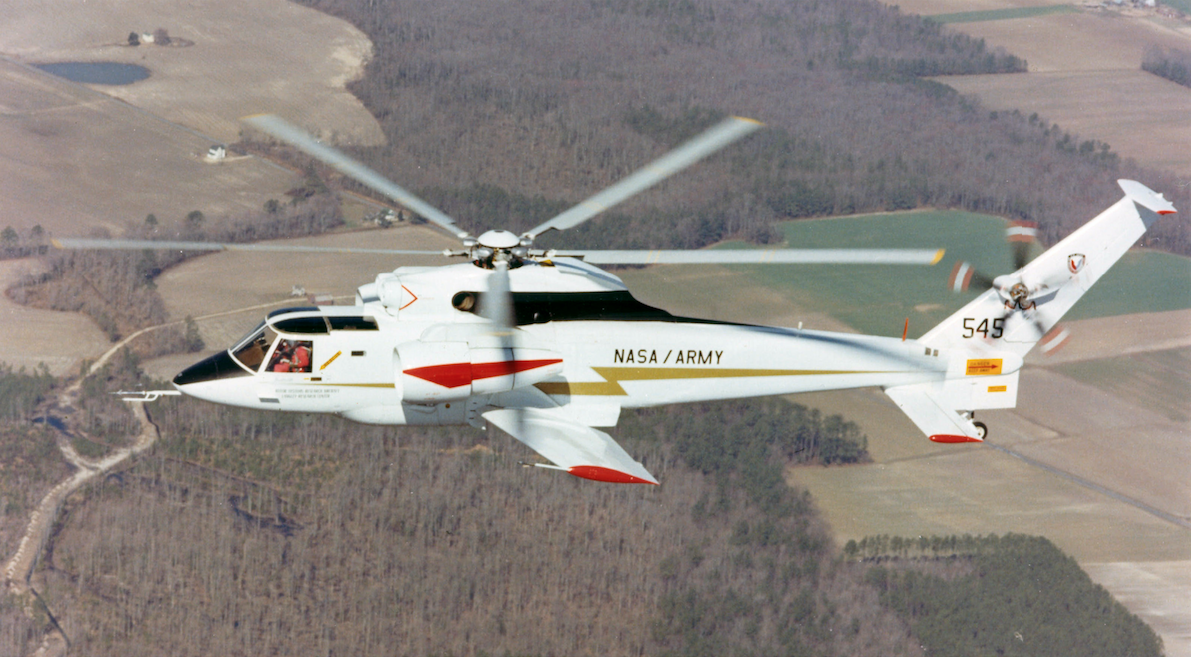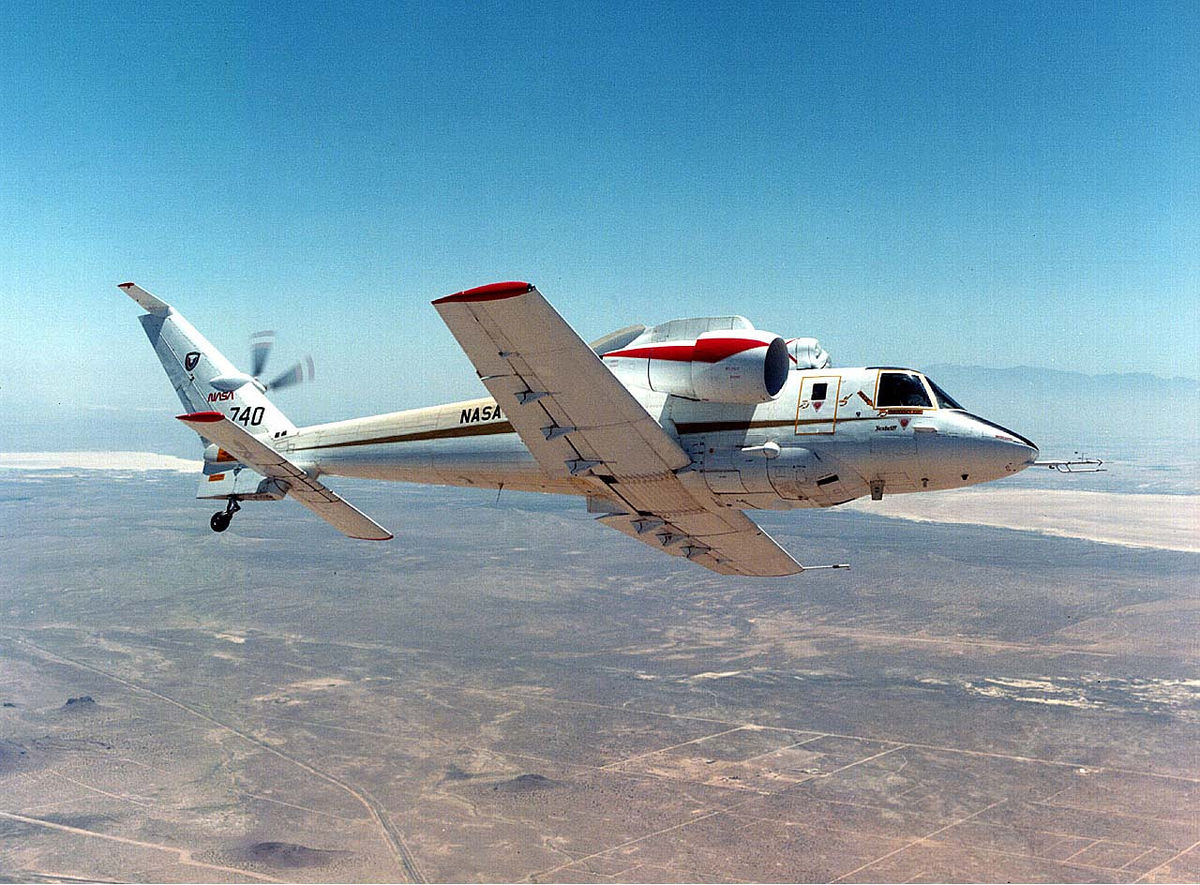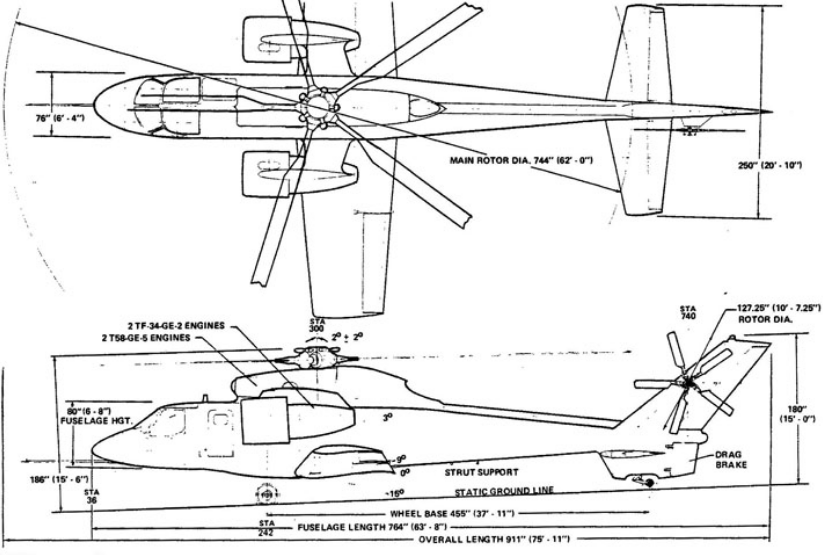

The S-72 was three-place, four-engine, single main rotor/tail rotor compound helicopter with retractable main landing gear. The flight crew consisted of two test pilots in a side-by-side cockpit, and a flight test engineer in the cabin. The left pilot’s position was equipped with “fly-by-wire” flight controls, while the right seat used conventional mechanical controls as a safety back up. The S-72 had a crew escape system, which blew the main rotor blades off, allowing the crew to land the aircraft in its airplane mode, or to be extracted by rockets.
The aircraft was built with a low-drag fuselage capable of reaching 340 knots (391 miles per hour/630 kilometers per hour) and used the rotors and drive train of the S-61 Sea King. A wing and two turbofan engines allowed the aircraft to fly as an airplane.

The S-72 had an overall length with rotors turning, of 75 feet, 11 inches (23.139 meters). The fuselage had a length of 63 feet, 8 inches (19.406 meters), and maximum width of 8 feet, 4 inches (2.642 meters). The RSRA had an overall height of 15 feet, 6 inches (4.724 meters). The variable incidence wing has a span of 45 feet, 1.2 inches (13.746 meters). The angle of incidence could be varied in flight from +15° to -9°. The span of the horizontal stabilizer is 20 feet, 10 inches (6.350 meters). The S-72 compound helicopter had an empty weight of 20,812 pounds (9,440 kilograms) and gross weight of 26,392 pounds (11,971 kilograms). When stripped to a pure helicopter configuration, the empty weight was reduced to 14,490 pounds (6.573 kilograms).
The S-72 was first flown using the rotors from the S-61. These were later to be replaced with experimental rotor systems. The S-61 main rotor has five blades and a diameter of 62 feet, 0 inches (18.898 meters). Each blade has a chord of 1 foot, 6.25 inches (0.464 meters). The main rotor turns at 203 r.p.m., counter-clockwise, as seen from above. (The advancing blade is on the right.) The S-72’s tail rotor also has five blades and has a diameter of 10 feet, 7.25 inches (3.232 meters). The blades have a chord of 7–11/32 inches (0.187 meters). The tail rotor turns clockwise as seen from the helicopter’s left. (The advancing blade is below the axis of rotation.) The tail rotor turns 1,244 r.p.m.


The T58-GE-5 turboshaft engines are the same engines that powered the HH-3E Jolly Green Giant combat search and rescue helicopters. They are a free-turbine turboshaft with a 10-stage axial-flow compressor section a 2-stage gas generator turbine (N1) and 1-stage free power turbine (N2). The T58-GE-5 has a Maximum Continuous Power rating of 1,400 shaft horsepower, each, and Military Power rating of 1,500 shaft horsepower. The engine is 59.0 inches (1.499 meters) long, 20.9 inches (0.531 meters) in diameter, and weighs 335 pounds (152 kilograms).
The TF34-GE-2 turbofan was developed for the U.S. Navy’s Lockheed S-3A Viking anti-submarine aircraft. It was a two-spool axial-flow jet engine with a single-stage fan section, 14-stage compressor, and 6-stage turbine section (2 high- and 4 low-pressure stages). The TF34-GE-2 was rated at 9,275 pounds of thrust (41.26 kilonewtons).
The S-72 had a maximum speed in level flight of 300 knots (345 miles per hour/556 kilometers per hour), and 340 knots (391 miles per hour/630 kilometers per hour) in a dive.
Two RSRAs were built. After Sikorsky’s flight test program was completed in 1979, the two RSRA aircraft were delivered to NASA Ames. The Aircraft received civil registrations N740NA (72001) and N741NA (72002).
The stripped airframe of the first Sikorsky S-72, 72001, sits behind a chain link fence at Fort Rucker, Alabama.
© 2020, Bryan R. Swopes